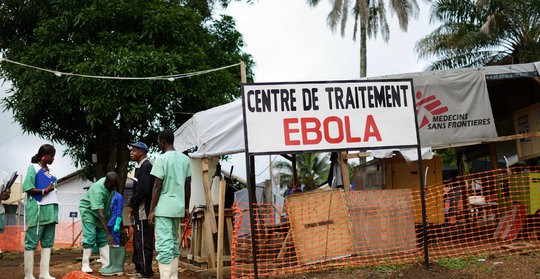
The Ebola outbreak in West Africa is completely out of control, and officials say it will most likely get much worse before it can get any better. On Wednesday, the World Health Organization (WHO) announced that rates of infection have continued to rise, affecting 1,975 people, with more than half dead.
The numbers come as the WHO, along with numerous African governments and other health organizations work frantically to control what has now become the deadliest Ebola outbreak in history. In just the past two days, there were an additional 127 cases and 56 deaths, CNN reported. The majority of the cases have occurred in the West African countries of Guinea, Liberia, Sierra Leone, and Nigeria.
The outbreak is so dire, and health officials are so desperate that the WHO announced this week that experimental drugs — the kind that haven’t been approved, or possibly even tested on humans — could be used ethically to attempt to treat patients suffering from the disease. According to the Los Angeles Times, there are five treatments currently being considered under “compassionate use.” “There was a unanimous agreement among the experts,” said Dr. Marie-Paule Kieny, assistant director-general of health systems and innovation at the WHO, according to the Times. “It is ethical.”
Dr. Kieny said that other experts in the field would meet sometime around the end of August to determine which treatments showed the most promise after animal experiments. The drugs being considered for use in the current outbreak include three antivirals and two vaccines, Dr. Kieny said. Really, these are their only options, since supplies of the experimental drug ZMapp, which was used successfully on two American health workers, have been depleted. The final doses of the experimental serum are on their way to Nigeria, where they will be given to two doctors who contracted the virus while working with Ebola patients.
Nevertheless, health workers face an upward battle as the supply of these drugs is uncertain as well. The fact remains that most countries in which Ebola originates have always been too poor to afford the development of drugs to fight it. Out of fear of bioterrorism, many countries began developing treatments. “This is typically a disease of poor people in poor countries where there is no market,” Dr. Kieny said. “If it hadn’t been for the investment of a few governments in the development of a vaccine, we would have been nowhere.”
Here in the U.S., researchers at the National Institutes of Health (NIH) recently announced that they would begin human clinical trials of a potential Ebola vaccine this fall. Meanwhile, all three U.S. facilities established to quickly make vaccines and therapeutics in the event of a major public health threat said this week that they are prepared to assist the U.S. government in any efforts to scale up production of Ebola treatments. The facilities, called Centers for Innovation in Advanced Development and Manufacturing (ADM), were set up by the U.S. Department of Health and Human Services in partnership with private industry, to respond to pandemics or chemical, biological, radiological, or nuclear threats. Combined, the centers have the capacity to produce and deliver at least 50 million doses of vaccine against pandemic influenza, the most likely source of a health emergency, within 12 weeks. Any Ebola order would be for far fewer doses.
Ebola is a vicious virus. It’s transmitted through bodily fluids and causes fever, headache, a lack of appetite, and sore throats within two to 21 days. Soon after symptoms appear, the virus begins to attack the immune system’s T-cells in a similar fashion to the way HIV works, although it does it much quicker. Within days, the body is aching, and vomiting and diarrhea are a regular occurrence. The virus’s deadliest stage comes soon after, in which the body’s organs begin to fail from the infection, and bleeding occurs both internally and externally until the person dies.
